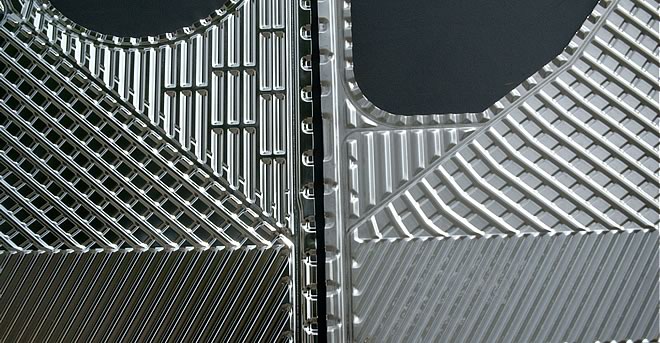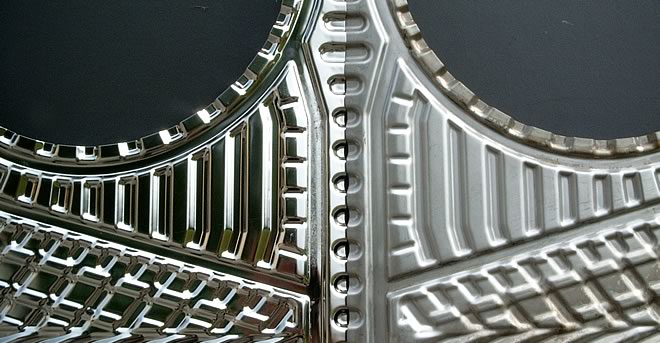Electropolishing for plate heat exchangers
Electropolishing is useful when plate heat exchangers are exposed to products that tend to form fouling. In this case, the surface can be polished by electrochemical treatment in such a way that the system downtime is reduced to a minimum.

Depending on the medium used, fouling at the heat transfer surfaces is more frequent, which has a negative effect on the transfer performance. To restore the transfer performance, it is necessary to disassemble the heat exchanger and clean the plates chemically or mechanically. Electrochemical polishing can significantly reduce this fouling and at the same time increase the corrosion resistance and thus the service life of the stainless steel plates.

In this process, the metal surface is being smoothed so that the surface is homogeneous, metallically clean and passivated. In addition, the gap speed in the heat exchanger can be increased, which improves the self-cleaning effect. This ensures that the performance is maintained for longer. If the increased fouling had not been taken into account in the system design and selection of the plate heat exchangers and if the plates have not been electrochemically polished while new, this can be done retrospectively.
Do you have problems with fouling and the corrosion resistance of your plate heat exchanger?
Just contact usOur tip: Just give us a call, we are always and immediately available for you.
We would also be pleased to visit you on site at your company.
Electropolishing - the process
In a special electrolyte, metal particles are removed from the anodically switched workpiece surface under the influence of direct current, which is generated with the aid of a rectifier. The removal is carried out load-free and preferably extends to the micro roughness.
The dissolved material reacts in the electrolyte and a salt is produced which remains in the electrolyte in dissolved form. The metal removal rate can also be precisely determined and is usually 5 to 50 µm. From stainless steel plates from plate heat exchangers 25 µm are removed. During the electrochemical polishing process, the electrolyte circulates by blowing in oxygen.
The bath temperature is 45 to 50 °C. The process is observed on the basis of the density of the chemical, the metal in the electrolyte and the bath temperature. These data are important to monitor the chemical reaction on the metal surface.
 The heat exchanger surface becomes smooth and shiny in the micro range. This is why we speak of „electropolishing“. Structures in the macro range are retained, but are smoothed and rounded on their surface regardless of their shape. Edges and corners are degraded more, resulting in reliable fine and extremely fine deburring across the entire surface area.
The heat exchanger surface becomes smooth and shiny in the micro range. This is why we speak of „electropolishing“. Structures in the macro range are retained, but are smoothed and rounded on their surface regardless of their shape. Edges and corners are degraded more, resulting in reliable fine and extremely fine deburring across the entire surface area.
Mechanical processing such as lathing, grinding and polishing damages the microstructure of the material layers near to the surface and changes their properties adversely. High temperatures and strong deformations during machining lead to cracks, structural changes and stresses in these areas.
Electropolished surfaces are:
- more corrosion-resistant
- easier to clean
- less susceptible to fouling (reduced germ growth)
- smooth and crack-free in the micro range
- free of burrs, scales and gas influences
- metallically pure and stress-free


